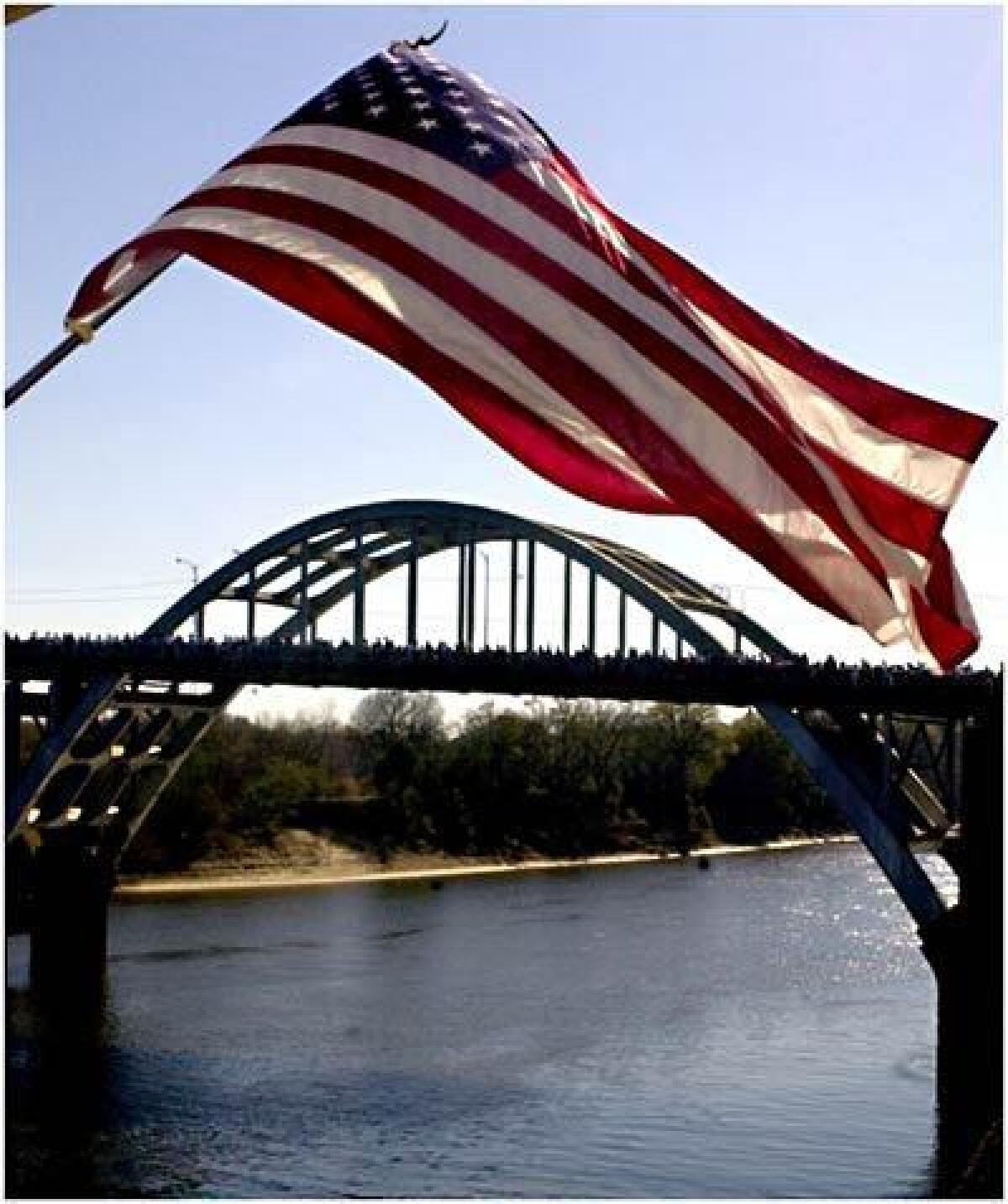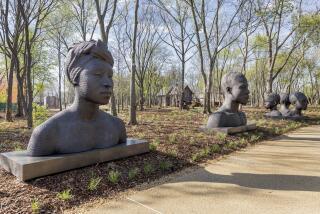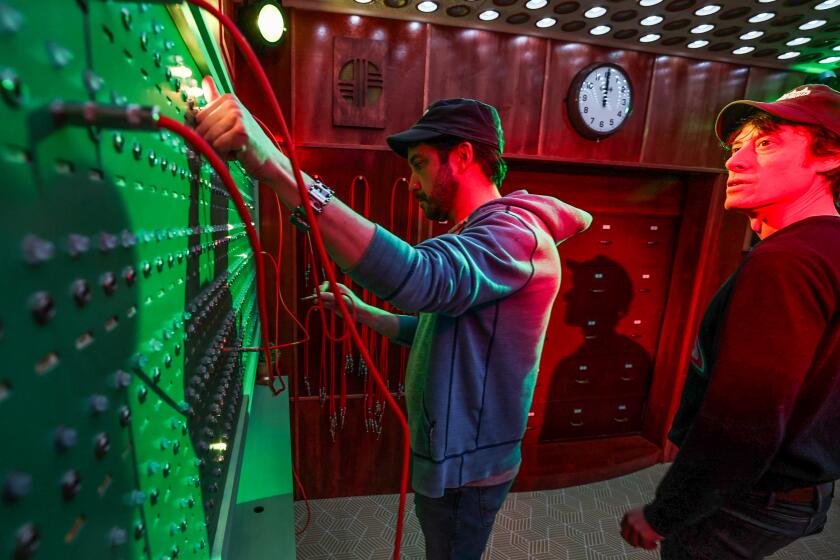Selma, Ala.: Crossing a bridge into civil rights history

I like to walk bridges. I’ve crossed the obvious: The Brooklyn Bridge, with its panorama of Manhattan, makes your heart soar. And I’ve strolled the obscure, including the Duke Ellington Bridge over Washington, D.C.’s Rock Creek. (In a world that generally names infrastructure after politicians, it’s hard not to admire a span honoring a jazz musician.)
Each bridge inspires. I’m awed by the engineering and the audacity to tame nature, or at least a tiny sliver of it. And I love the setting, suspended between water and sky.
Yet none of this prepared me for the Edmund Pettus Bridge in Selma, Ala. It’s hardly the prettiest span: a 1940s-era bridge arching over the muddy Alabama River. But the afternoon my wife, teenage son and I made the quarter-mile crossing, I decided it was the most beautiful bridge in the country.
It’s not what you see. It’s the ghosts that linger from nearly half a century ago. This is where hundreds of unarmed men, women and children marched in the face of an overwhelming police force on March 7, 1965, a day now known as Bloody Sunday. They were protesting the lack of voting rights for blacks and the recent police slaying of a black man. As the group neared the top of the span, they could see a phalanx of law officers with riot gear and billy clubs. The bridge led directly to them. The marchers knew there could be no escape. They kept walking.
Whenever I visit a historic site, I inevitably ask myself what I would have done. Would I have been that brave? Here at the peak of the Pettus Bridge, I knew I would have fled.
Yet these protesters didn’t falter, and because of their valor, the world changed. Just a few months later, Congress passed the Voting Rights Act, and in a substantial way the civil rights era ended in victory.
The splendor here is sacrifice and courage. And it’s the undeniable evidence that change is possible. The Pettus Bridge shows that for all its faults, the idea of America works. It’s hard to imagine anything more beautiful.
—Larry Bleiberg
Alabama journalist Larry Bleiberg runs the website CivilRightsTravel.com.
More to Read
Sign up for The Wild
We’ll help you find the best places to hike, bike and run, as well as the perfect silent spots for meditation and yoga.
You may occasionally receive promotional content from the Los Angeles Times.






